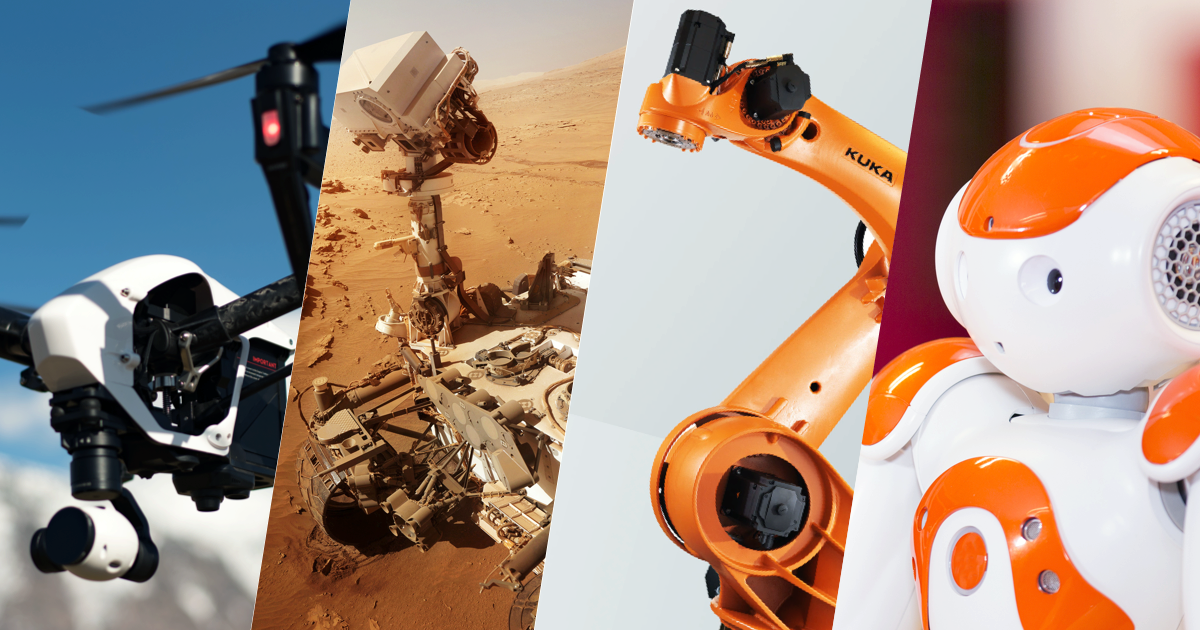Explore the history of the term, decipher its modern meaning, and discover some surprising examples of autonomy in action!

While words and phrases such as “robot,” “self-driving car,” and “artificial intelligence” are in fairly wide use these days, it’s much less common to come across the term “autonomous system.” And yet, robots and self-driving cars are both autonomous systems, and artificial intelligence is a big part of what makes them possible. So why is “autonomous system” not a more familiar term?
Part of it may have to do with the history of the term itself. When we trace it back in time, we find multiple origins, with the term being previously used in arenas such as mathematics and networking. To make matters more confusing, its present usage is still evolving as well. The term “autonomous systems” is actually still a relatively new term, and it continues to take on new dimensions as new technologies and applications emerge.
Let’s consider the term’s history first. One key usage comes to us from the realm of mathematics. As described in the Encyclopedia of Mathematics, the term “autonomous system” is synonymous with “autonomous differential equation,” and an autonomous system in this context can be defined as, “A system of ordinary differential equations which does not explicitly contain the independent variable (time).” A parallel historical usage can be found in networking, where an autonomous system is understood to be a collection of Internet Protocol routing prefixes controlled by one or more network operators.
Having briefly summarized some historical antecedents for the term, we can now pursue a contemporary understanding. In an autonomous system, hardware and software work together to solve a problem by performing an action. For a system to be considered truly autonomous, the system must be able to gather information, find a solution based on this information, and execute an action to achieve a goal.
Let’s now look at some different examples of modern autonomous systems, to understand how they qualify under the definition we’ve laid out above.
First, a self-driving car. A self-driving car is considered an autonomous system because it gathers information from its sensors, analyzes that information to plan an action, then executes an action to achieve a goal. For example, a self-driving car might gather data from its sensors indicating a road hazard ahead. The system must then analyze this data, and devise a solution—in this case, it must figure out how to avoid the hazard. It may determine that it can go around the hazard, so the system devises a sequence of actions that will make this possible, then it executes that sequence—it slows down, veers left, then straightens out briefly, then veers right, then straightens out, then picks up speed again.
Let’s look at another example—an IoT device like a smart thermostat. A smart thermostat is an autonomous system as well, because it does things like gather information about the temperature in a given environment, then uses that information to determine whether the environment needs to be heated or cooled, then executes a task to achieve the desired result.
Finally, let’s consider an example from the world of robotics—a home service robot. A home service robot can be considered an autonomous system because it gathers information about the world around it, uses this information to identify a desirable goal (such as bringing an object from one room to another), then devises a plan and executes it, to achieve its goal—in this case, relocating the object to a new room.
At first glance, these may seem like pretty disparate examples, but with a little digging, the similarities become clear, and this is what is really exciting about autonomy—that there are so many potential applications!
Are you interested in learning how to code and build autonomous systems? Do you have ideas for new ways to apply autonomous thinking? Can you envision a new autonomous system somewhere where we haven’t seen one yet? Then come to Udacity, and start learning the tools and techniques to bring your innovations to life! Udacity has an entire school devoted just to autonomous systems. Visit our School of Autonomous Systems today, and get ready to start building the future of autonomy!





